Indonesia expands Anoa wheeled family
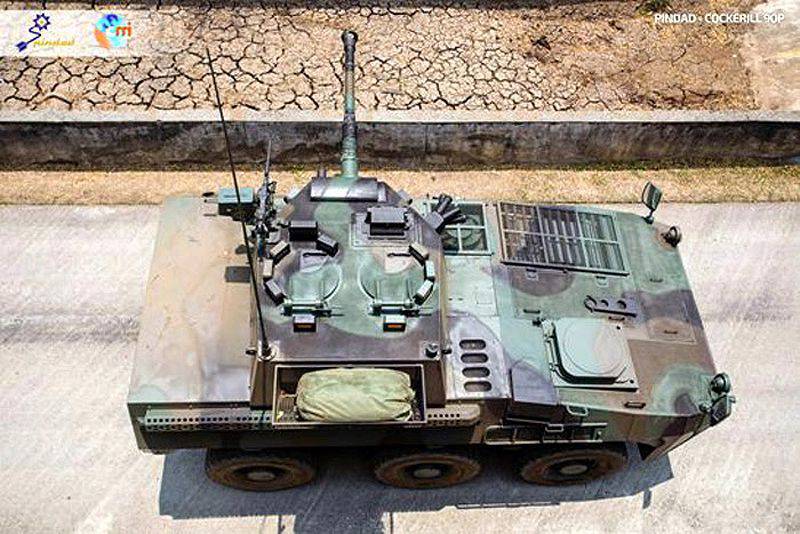
The newest Badak fire support vehicle with an installed turret from CMI Defense CSE 90LP armed with an 90-mm cannon, which is turned to the left in the photo
Like many countries in the Asia-Pacific region, Indonesia has traditionally imported its armored fighting vehicles (BBMs), but in order to become more self-sufficient and reduce the risk of supply interruptions for political reasons, it has begun to develop a range of platforms Anoa-2 machines of local development.
The new fire support machine, named Badak, was presented at the IndoDefence 2014 in Jakarta. It is a combination of the CMI Defense CSE90 twin turret version, already installed on the 22 machine of the Indonesian army Doosan Black Fox 6x6, and a substantially modified version of the Anoa-2 armored personnel carrier.
The Badak, which was designed to meet the potential requirements of the Indonesian army, has a CMI Defense Cockerill CSE 90LP twin turret (LP means that a low-pressure 90-mm rifle can fire a variety of ammunition).
Although the Badak gun mount is similar to the Anoa-2, it has a new hull design and a higher level of ballistic protection in accordance with its offensive role, now it is the STANAG 4569 Level 3. The machine also has a reinforced suspension with double wishbones to increase the level of stabilization of the gun platform, and the 340 horsepower XNUMX engine can also handle the increased weight. and automatic transmission ZF. The power side is moved to the left side of the car, respectively, the driver is located on the right side next to the engine, freeing up space in the rear of the hull for the tower and other equipment.
In accordance with the fact that two companies collaborated in designing the machine, it received the second designation Pindad Cockerill 9 OP. In the tower, the commander sits on the left and the shooter on the right. The base level of defense of the tower corresponds to the 1 level according to the NATO standard STANAG 4589, but can be upgraded to the 3 level.
The drives of the turret and the armament are electric and, as usual, there is a wide range of fire control systems, including day / night sighting systems, a laser range finder and a ballistic computer.
The development of the original Anoa machine actually began 10 years ago under the leadership of the Indonesian company PT Pindad. The first APS-1 was manufactured in the 2004 year, followed by the APS-1V1 version a year later. The first prototype was built in 2005, followed in 2008 by the first Anoa-1 production machine; currently, mass production is only increasing.
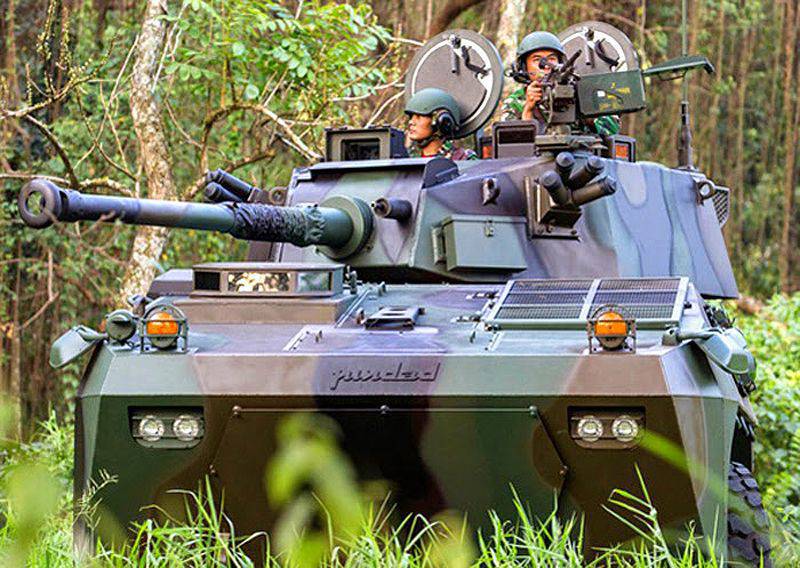
The Indonesian army has a need for a machine like Badak in order to comply with the Minimum Power Strategy developed by the Ministry of Defense.
Winemaking
PT Pindad does not publish production data, but states that “more than 100 machines were manufactured”, but according to some sources, this figure is actually much higher, since more than 150 units were produced. Variants of these machines were deployed in the UN peacekeeping contingents in Lebanon and Sudan.
In appearance, Anoa is similar to the armored personnel carrier VAB (Traffic de l'Avant Blinde), created by Renault Trucks Defense and manufactured in the 4x4 and 6x6 variants. The main difference is in the location of the power unit, in the VAB it is installed on the left behind the driver and commander, while in Anoa it is located on the right.
However, the power unit at the French-made Anoa armored personnel carrier is one of the few components of the vehicle that was imported. It consists of a Renault Dxi7 six-cylinder turbo-charged diesel engine with an 320 horsepower, coupled with an ZF 6HP 502 automatic transmission with Behr cooling system. The machine has a total mass of 14 tons, which ultimately gives the specific power of 22,85 hp / t and the maximum speed on the highway to 90 km / h.
The body is made of welded steel armor and protects those sitting inside from small-arms fire. weapons and shell splinters.
weaponry
The Anoa BTR's own weapons are relatively lightweight, protected by a combat module with a 12,7-mm machine gun or 40-mm automatic grenade launcher mounted on the left behind the driver's seat. Since the armament is not stable, it is necessary to stop the vehicle when firing targets. An additional 5,56-mm or 7,62-mm machine gun to cover the rear arc can be mounted on the roof in the stern, while two groups of three smoke-grenade launchers with electromig are mounted on the roof for firing ahead.
Each vehicle contains 10 infantrymen in addition to the commander, driver, and gunner. Landing in the car through the aft ramp with a mechanical drive or an emergency door; paratroopers are watching out of the car through bullet-proof viewing devices located above the embrasures for firing. To increase the level of protection devices are closed with covers.
Standard equipment installed on the BTR includes the steering of the first two axles with hydraulic booster, wheels with rifle-resistant inserts, a winch for self-pulling and a generator on the 100 amps.
The Anoa-2 BTR has a total mass of 14,5 tons (the original car has a combat mass of about 15 tons) and looks almost identical to the original car, with the exception of a few small improvements based on customer remarks.
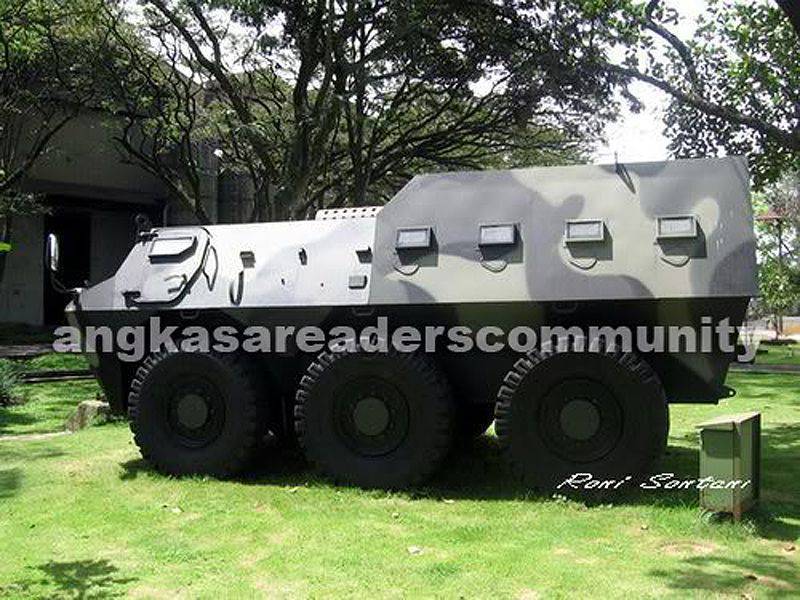
Anoa-2 in the configuration of the control point; it is clearly seen that the roof in the rear of the case is raised
The Anoa-2 sanitary option also has a raised roof behind the engine compartment.
Part of the case at the evacuation option Anoa-2 removed to install the crane and winch
options
In addition to the basic Anoa-1 and Anoa-2 options, five other options were made: sanitary, control, supply, 81-mm mortar (firing through open hatches) and evacuation. All of them differ in the appropriately modified housing and layout solutions.
Most of the changes received evacuation option with a telescopic crane cantilever installation with a hydraulic actuator installed in the rear of the machine; in the stowed position the boom of the crane is directed forward. Two stabilizers are also installed on each side of the machine, and there is a hydraulic winch for pulling out behind the crane. On the case there are places for storage of tools and other specialized equipment.
A prototype 120-mm self-propelled mortar variant was also made, which has a spring system of local development, which reduces recoil forces when firing from a mortar.
The basic version of Anoa does not float, but can overcome water barriers up to one meter deep. However, in 2014, the prototype of the fully floating version was completed. This car on the water is driven by large water cannons installed on each side at the rear of the hull.
Materials used:
www.janes.com
www.pindad.com
www.indodefence.com
en.wikipedia.org
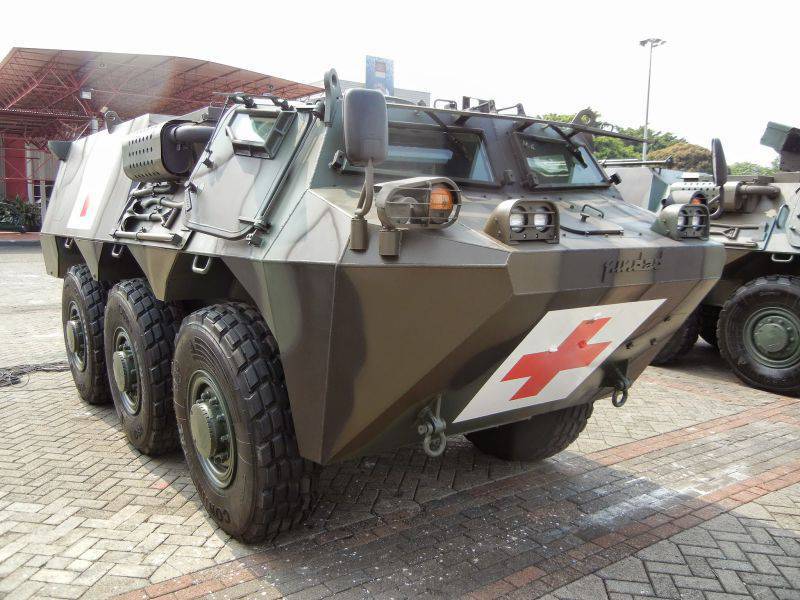
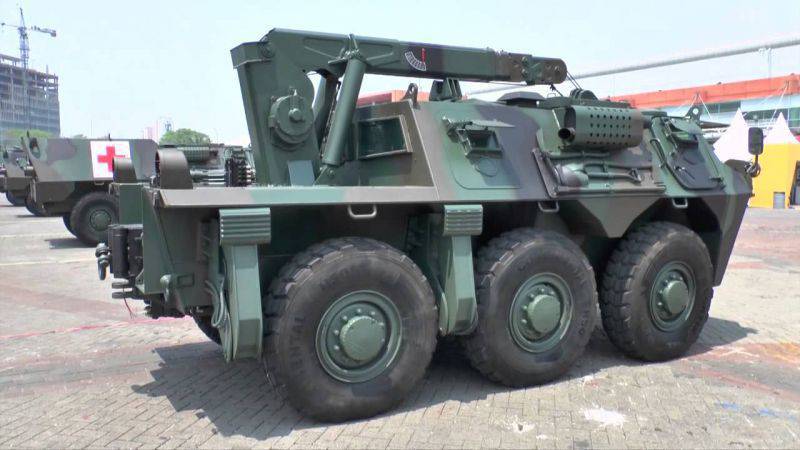
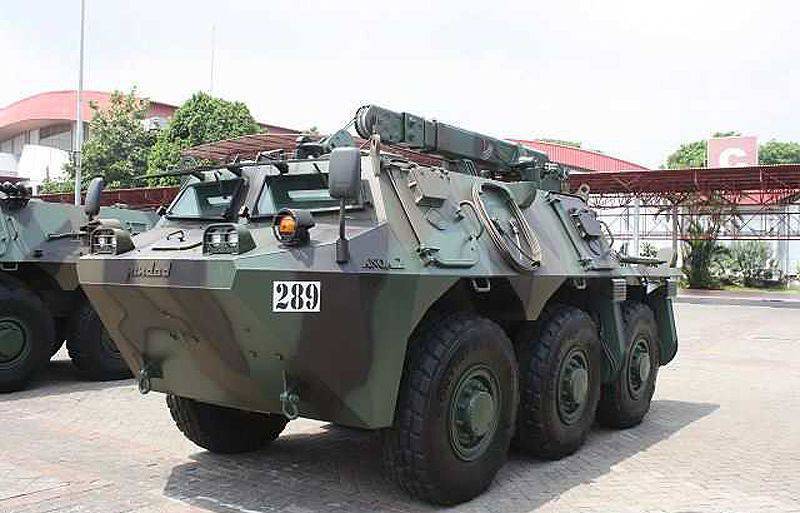
Information